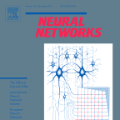Computer-aided early diagnosis of Alzheimer's disease (AD) and its prodromal form mild cognitive impairment (MCI) based on structure Magnetic Resonance Imaging (sMRI) has provided a cost-effective and objective way for early prevention and treatment of disease progression, leading to improved patient care. In this work, we have proposed a novel computer-aided approach for early diagnosis of AD by introducing an explainable 3D Residual Attention Deep Neural Network (3D ResAttNet) for end-to-end learning from sMRI scans. Different from the existing approaches, the novelty of our approach is three-fold: 1) A Residual Self-Attention Deep Neural Network has been proposed to capture local, global and spatial information of MR images to improve diagnostic performance; 2) An explanation method using Gradient-based Localization Class Activation mapping (Grad-CAM) has been introduced to improve the explainable of the proposed method; 3) This work has provided a full end-to-end learning solution for automated disease diagnosis. Our proposed 3D ResAttNet method has been evaluated on a large cohort of subjects from real datasets for two changeling classification tasks (i.e., Alzheimer's disease (AD) vs. Normal cohort (NC) and progressive MCI (pMCI) vs. stable MCI (sMCI)). The experimental results show that the proposed approach has a competitive advantage over the state-of-the-art models in terms of accuracy performance and generalizability. The explainable mechanism in our approach is able to identify and highlight the contribution of the important brain parts (e.g., hippocampus, lateral ventricle and most parts of the cortex) for transparent decisions.
翻译:在这项工作中,我们提出了一种新型计算机辅助方法,用于早期诊断阿尔茨海默氏病(AD)及其基于结构结构的轻度认知障碍(MCI)的早期诊断(MCI) 磁共振成像(SMRI)为早期预防和治疗疾病发展提供了成本有效和客观的方法,从而改善了病人的护理。在这项工作中,我们提出了一种新型计算机辅助方法,用于早期诊断阿尔茨海默氏病(AD)疾病(AD ResAttNet ), 用于从 SMRI 扫描中进行端到端的学习。与现有方法不同,我们方法的新颖性是三重自控深神经成像(MRI) 的准确性能(SMRI) 准确性能(SDIS) 的局部性能分析(Grad-CAM), 常规性能(MAD ) 的常规性能分析(MAD ) 和常规性能分析(MAD ) 的大规模实验性能分析(MAD ) 。





